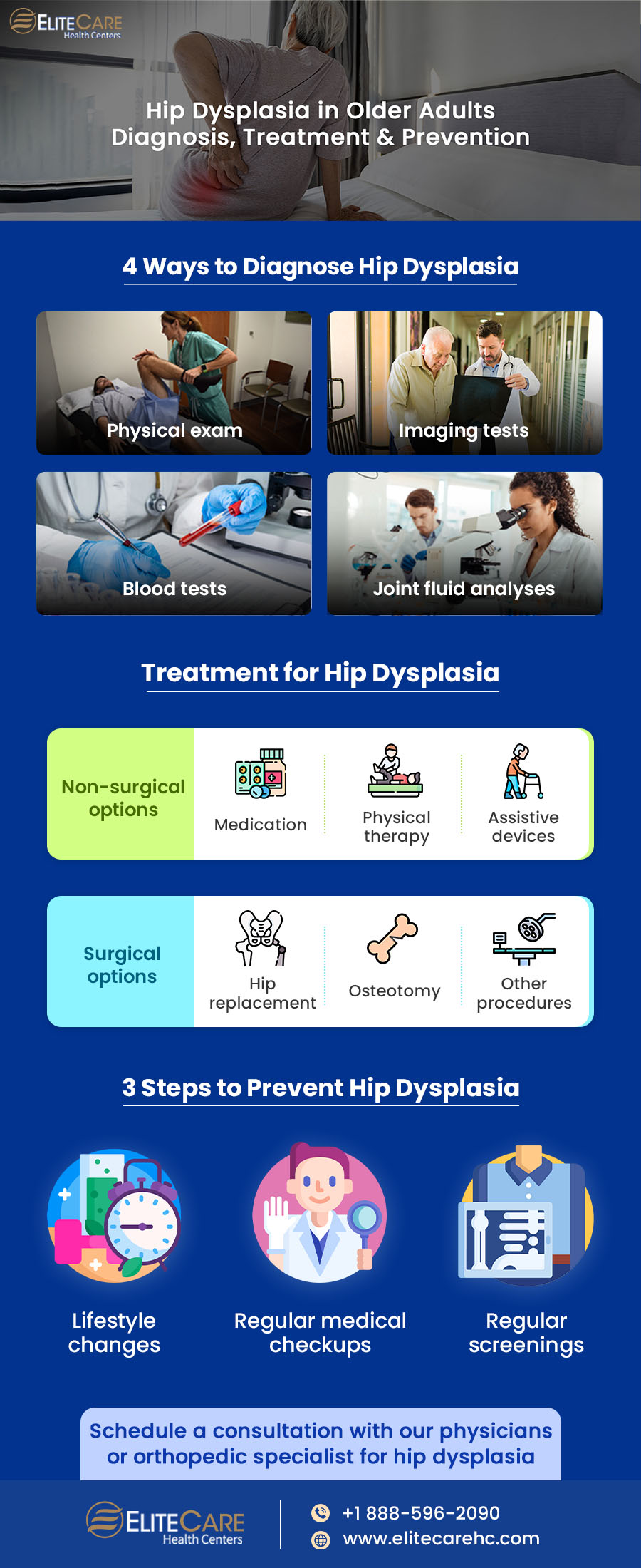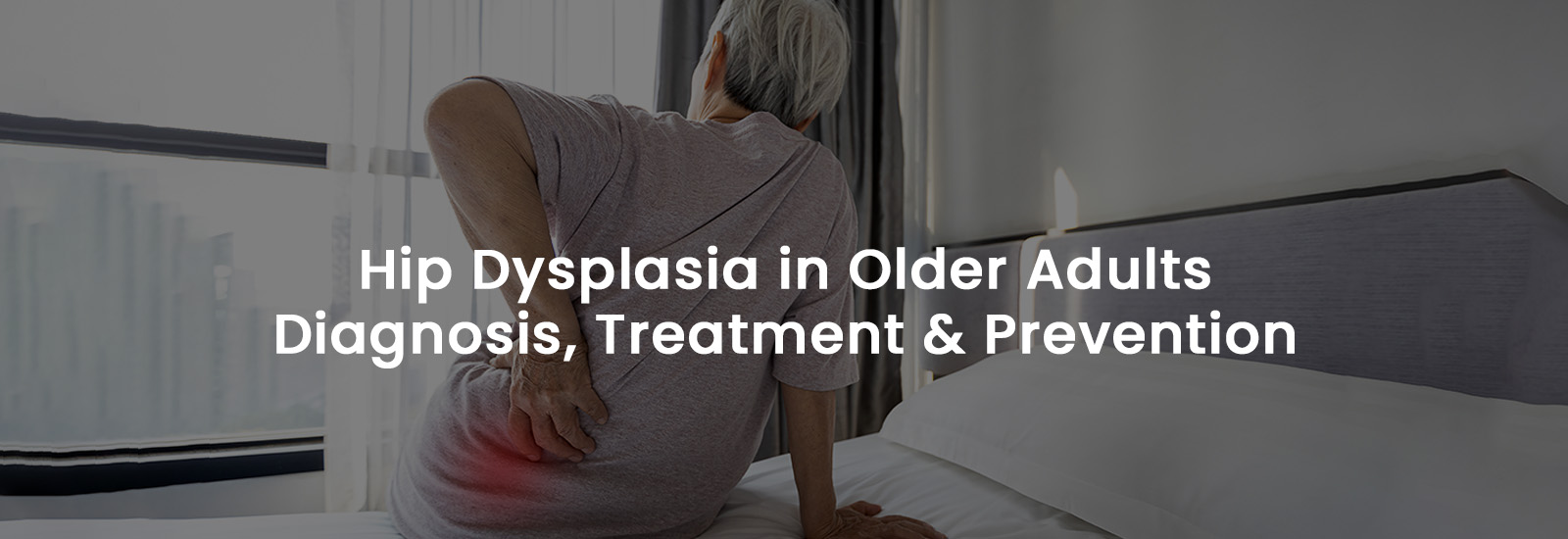
What is Hip Dysplasia?
When the hip joint is malformed, it causes hip dysplasia, leading to instability and damage within the hip joint itself. The hip joint is a ball-and-socket joint, where the femur ball fits into the pelvis socket. In hip dysplasia, the socket is too shallow or not formed properly, causing the ball to move around excessively within the socket. While it often affects infants and young children, hip dysplasia can also occur in adults, including seniors. Hip dysplasia can be present from birth but can also develop later in life due to age-related changes, leading to cartilage damage, arthritis, and pain.
A combination of genetic and environmental factors can cause hip dysplasia. In some cases, it may be inherited or passed down through families. According to a study, emales have a 32% higher risk of hip dysplasia than males. Other factors that may increase the risk are having a history of hip problems or having been born in breech position (feet-first).
Symptoms of hip dysplasia can vary depending on the severity of the condition. Common symptoms include:
- Pain or discomfort in the hip or groin area
- Stiffness
- Clicking or popping sound when moving the hip.
In severe cases, hip dysplasia can cause arthritis and significant pain, affecting an individual’s ability to move around freely and perform daily activities.
Risk factors
Seniors may be at higher risk for developing hip dysplasia due to age-related changes in the hip joint. However, there are other risk factors that primary care physicians and medical clinics may consider. These risk factors can include:
1. Age-related changes to the hip joint
With age, the hip joint undergoes wear and tear, leading to arthritis and other conditions that affect it. The bones in the hip joint become weaker and more brittle, which increase the risk of fractures and other injuries.
2. Genetic factors
Hip dysplasia can be hereditary, so seniors with a family history may be more likely to develop it themselves. In some cases, hip dysplasia may be caused by a genetic mutation that affects the development of the hip joint. While genetic factors cannot be changed, early detection at senior care service clinics and treatment of hip dysplasia can help prevent further damage to the hip joint and reduce the risk of complications.
3. Lifestyle factors
Being overweight can put a strain on the hip joint and a sedentary lifestyle can lead to muscle weakness and decreased joint stability.
4. Other medical conditions
Certain medical conditions, such as cerebral palsy, muscular dystrophy, or Down syndrome, can increase the risk of hip dysplasia, as these conditions affect muscle tone and coordination, leading to misalignment of the hip joint. Additionally, prior hip injuries or surgeries may increase the risk of developing hip dysplasia later in life.
By understanding these risk factors, seniors can take steps to manage their hip health and reduce their risk of developing hip dysplasia. This may include maintaining a healthy weight, staying active, and seeking prompt medical attention for hip pain or discomfort.
Diagnosis
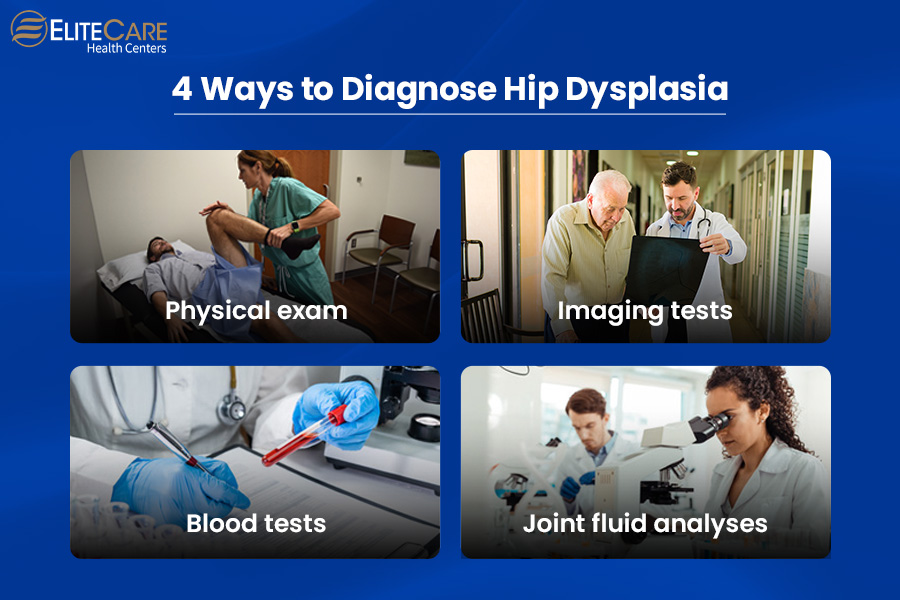
If a senior experiences pain or difficulty walking, they should visit their primary care physician at the medical clinic for an evaluation. Diagnosis of hip dysplasia can be made through a variety of tests and exams, such as:
1. Physical exam
During a physical exam, the senior care service provider may assess the senior’s range of motion, strength, and stability of the hip joint. They may also ask about symptoms such as pain, stiffness, or difficulty walking.
2. Imaging tests
X-rays, MRI (magnetic resonance imaging), or CT (computed tomography) scans are often used to confirm the diagnosis of hip dysplasia. These tests can help the provider evaluate the hip joint’s structure and identify any abnormalities.
3. Other diagnostic tests
In some cases, additional tests, such as blood tests or joint fluid analyses, may also help diagnose hip dysplasia or rule out other conditions causing similar symptoms.
Treatment Options
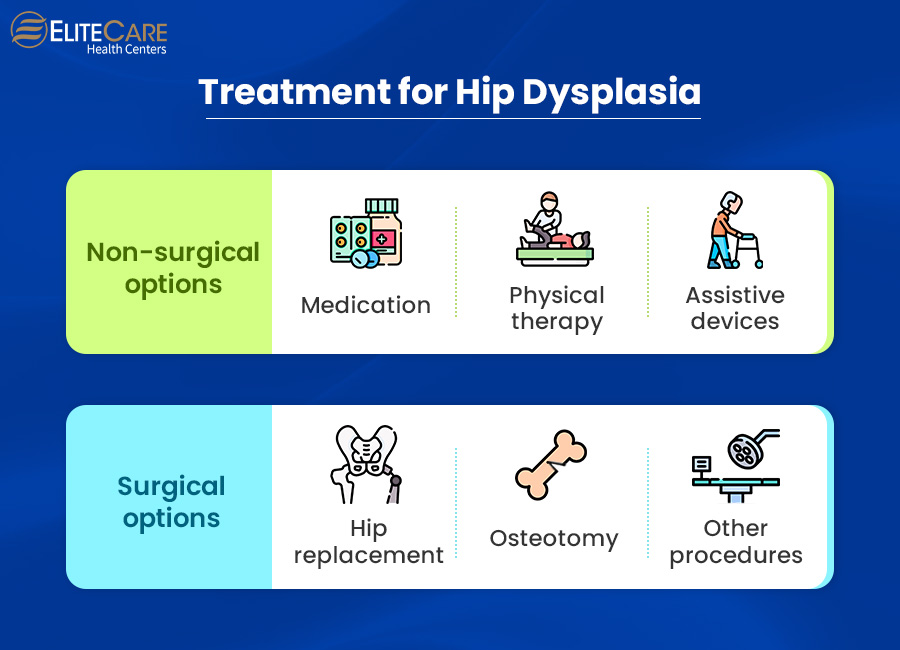
Hip dysplasia in seniors can be treated with a range of non-surgical and surgical options, depending on the severity of the condition and the individual’s overall health and mobility.
Non-surgical options
- Medications: Over-the-counter pain relievers or prescription medications may be recommended by the senior care service provider to manage pain and inflammation associated with hip dysplasia.
- Physical therapy: The health care provider will develop an exercise program to strengthen the muscles around the hip joint and improve joint stability. They may also use modalities like heat and cold therapy, massage, and stretching to alleviate pain and stiffness.
Read More: Benefits of physical therapy for seniors
- Assistive devices: Using assistive devices like canes or walkers can help relieve pressure on the hip joint and reduce pain while walking.
Surgical options
- Hip replacement: A hip replacement surgery involves removing the damaged part of the hip joint and replacing it with an artificial joint. This procedure is usually recommended for seniors with severe hip dysplasia and significant joint damage.
- Osteotomy: An osteotomy involves cutting and realigning the bones around the hip joint to improve joint stability and alignment. This procedure is usually recommended for older adults with milder hip dysplasia.
- Other procedures: Other surgical procedures, such as hip arthroscopy, may be recommended depending on the severity and location of the hip dysplasia.
Working with a healthcare provider is important. They may recommend a treatment plan that can involve a combination of non-surgical and surgical options to improve joint function, reduce pain, and enhance overall quality of life.
Preventive Steps
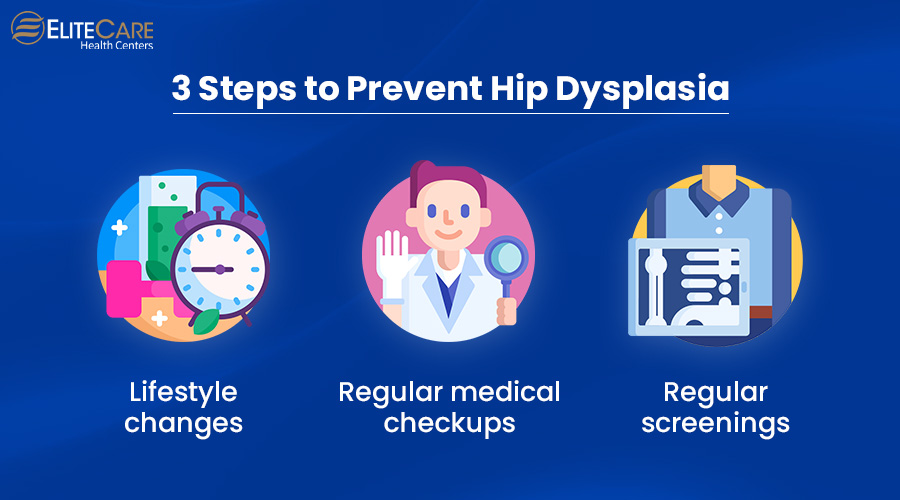
It is not always possible to prevent hip dysplasia, but there are a few steps that can be taken to reduce the risk of developing the condition, particularly in individuals with higher risk due to genetic or other factors. Some preventive measures may include:
1. Lifestyle changes
Maintaining a healthy weight and engaging in regular exercise can help reduce the risk of hip dysplasia in seniors. Individuals with hip dysplasia should opt for low-impact options such as walking, swimming, and cycling. Avoid high-impact activities such as running or jumping, which can stress the hip joint.
2. Regular medical checkups
Routine checkups can help detect signs early on, particularly in individuals who are at high risk. Seniors should talk to their primary care physician if they experience any hip pain or discomfort or any changes in their mobility or gait.
3. Screening for high-risk individuals
Seniors with a family history of hip dysplasia may benefit from regular screening as advised by their physician. This may involve imaging tests such as X-rays or MRI scans to evaluate the structure of the hip joint and detect any abnormalities early on.
By preventing hip dysplasia, seniors can reduce their risk of developing the condition and improve their overall quality of life.
Take-Away
Seniors should prioritize their hip health as early detection and treatment of hip dysplasia are crucial to prevent further damage to the hip joint and reduce the risk of complications. If you or a loved one is experiencing hip pain or discomfort, talk to a healthcare provider at Elite Care Health Centers. The primary care physician at Elite Care will develop a personalized prevention plan based on individual needs and risk factors. Remember, it’s never too late to prioritize your hip health and take steps toward a pain-free, active lifestyle.
